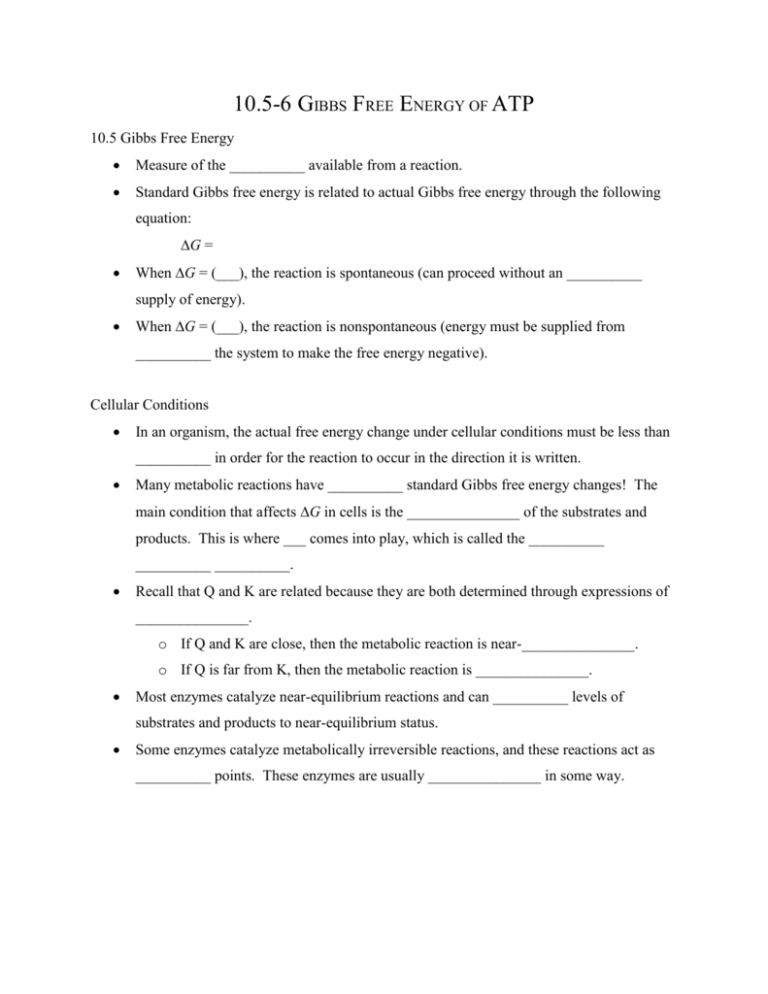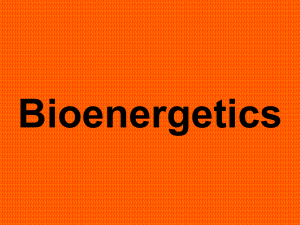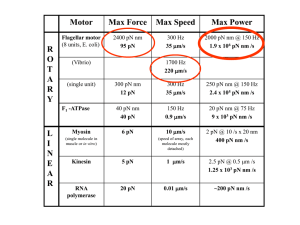10.5-6 GIBBS FREE ENERGY OF ATP 10.5 Gibbs Free Energy
advertisement

10.5-6 GIBBS FREE ENERGY OF ATP 10.5 Gibbs Free Energy Measure of the __________ available from a reaction. Standard Gibbs free energy is related to actual Gibbs free energy through the following equation: G = When G = (___), the reaction is spontaneous (can proceed without an __________ supply of energy). When G = (___), the reaction is nonspontaneous (energy must be supplied from __________ the system to make the free energy negative). Cellular Conditions In an organism, the actual free energy change under cellular conditions must be less than __________ in order for the reaction to occur in the direction it is written. Many metabolic reactions have __________ standard Gibbs free energy changes! The main condition that affects G in cells is the _______________ of the substrates and products. This is where ___ comes into play, which is called the __________ __________ __________. Recall that Q and K are related because they are both determined through expressions of _______________. o If Q and K are close, then the metabolic reaction is near-_______________. o If Q is far from K, then the metabolic reaction is _______________. Most enzymes catalyze near-equilibrium reactions and can __________ levels of substrates and products to near-equilibrium status. Some enzymes catalyze metabolically irreversible reactions, and these reactions act as __________ points. These enzymes are usually _______________ in some way. 10.6 The Free Energy of ATP ATP is a donor of several metabolic groups when hydrolyzed: When a single phosphoryl group Pi is donated, _____ is left. ATP + H2O When inorganic pyrophosphate PPi is donated, ______ is left. ATP + H2O G° = –32 kJ/mol G° = –45 kJ/mol Nucleotide diphosphates and triphosphates are usually present as complexes with _____ ions (sometimes _____ ions). This one is favored in aqueous solution. A large amount of energy is released during the hydrolysis of the phosphoanhydride linkages of ATP because… 1. Loss of electrostatic _______________ among the negatively charged oxygen atoms of the phosphoanhydride groups. 2. The products of hydrolysis are more _______________ than ATP. 3. The products of hydrolysis are more _______________ than ATP. The electrons on terminal oxygens are more _______________ than those on bridging oxygens. ATP, UTP, GTP and CTP are considered __________-rich compounds because of the free energy change associated with the loss of their phosphoanhydrides. A series of __________ (or phosphotransferases) catalyze interconversions of nucleoside mono-, di- and triphosphates. GMP + ATP guanylate kinase GDP + ATP nucleoside diphosphate kinase Intracellular ATP concentrations is maintained by the following two reactions: AMP + ATP adenylate kinase * ADP can then be converted to ATP. The overall process is shown below: AMP + ATP + 2 Pi The Gibbs free energy change for ATP hydrolysis in vivo is actually __________ than the standard Gibbs free energy change of –32 kJ/mol, as exemplified below: o Ex: In a rat hepatocyte, the concentrations of ATP, ADP, and Pi are 3.4 mM, 1.3 mM and 4.8 mM, respectively. Calculate the Gibbs free energy change for hydrolysis of ATP in this cell. ATP ADP + Pi G° = –32 kJ/mol









